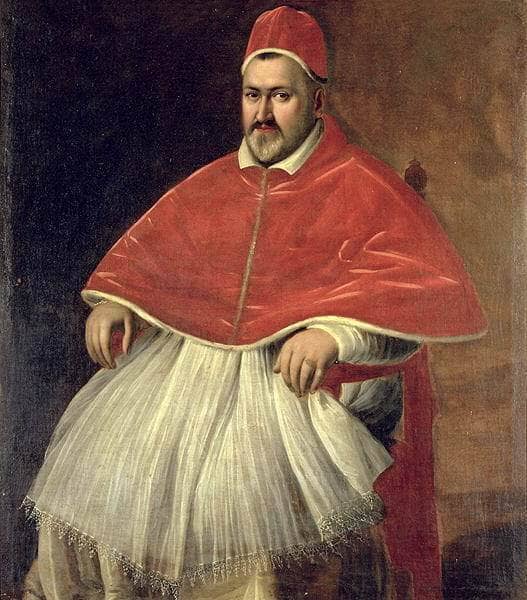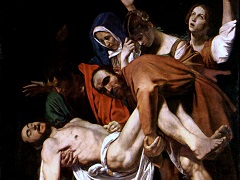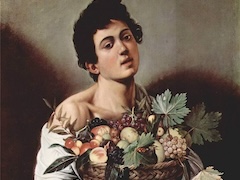Portrait of Pope Paul V, by Caravaggio

Camillo Borghese, who came from an old Siennese family, and whose father, Marcantonio, the famous jurist, had married Flaminia Astalli, a member of the Roman aristocracy,
was elected pope on 16 May 1605 and took the title of Paul V, reigning from 1605 to 1621. We know from Bellori that Caravaggio painted a seated portrait of him as pope,
and this must have been executed sometime before the artist's flight from Rome in the summer of 1606. The work was also mentioned in Manilli's and Montelatici's guides
to the Villa Borghese of 1650 and 1700 respectively and was probably transferred from this suburban villa to the Borghese town palace at a subsequent date.
Many scholars have doubted the present painting's authenticity, considering its composition altogether too tame for Caravaggio, but their reservations are
probably unfounded. Marini has stressed the high quality of handling which is not usually evident in photographs. Furthermore, the supposedly uninspired pose was almost
certainly a factor beyond Caravaggio's control. Paul V was a tall, bulky figure renowned for his dignified and even taciturn demeanour, and one cannot imagine him willingly
adopting a more histrionic pose. Indeed, his unostentatious bearing exemplifies the sober, cautious and, in fact, genuinely religious spirit both of the man himself and of
the Counter Reformation, and it is instructive to compare Caravaggio's portrait with the similar portrait of Cardinal Guervara (New York, Metropolitan Museum of Art), by
El Greco, another painter of unusually expressive power who seems to have suffered but also gained from the restrictions of protocol.
For in the last resort Caravaggio derived advantage from the formal restraint imposed on him by creating an intense and powerful image, full of presence, which implies much more
than it states overtly. Rather than an unsympathetic indication of the pope's malevolence, the tense, narrowed eyes are simply well-observed details, for we know that he was short-sighted.
















